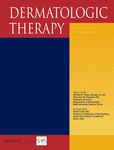Dermoscopy and reflectance confocal microscopy for monitoring the treatment of actinic cheilitis with ingenol mebutate gel: Report of three cases
Abstract
Actinic cheilitis (AC) can precede the development of squamous cell carcinoma (SCC) of the lip, a location with higher risk of invasiveness and metastasis. Herein, we reported the use of ingenol mebutate (IngMeb) 0.015% gel on three consecutive days to treat three patients suffering from AC. All the three patients achieved complete clearance of AC with rapid clinical effect, favorable safety profile, good patient's compliance related to short time of applications, and few local skin reactions. So IngMeb is an attractive new therapy for AC. Moreover, the present case report adds further evidence to the usefulness of dermoscopy and Reflectance confocal microscopy (RCM) in the assessment and monitoring of treatment outcome.
CONFLICT OF INTEREST
None declared.




